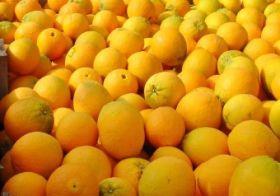
South Africa’s Citrus Growers’ Association (CGA)has said thatthe country is heading towards the end of a season which, although breaking many records, had many ups and downs,makingit challenging for most growers and exporters.
“Unfortunately most grapefruit exporters will probably relate to the words ‘despair’ and ‘darkness’ when they discuss the results of this season,” says the CGA’s Justin Chadwick. “The record crop of southern African grapefruit, although excellent in all quality aspects, just could not find a home in the market. Even in markets where volumes did not exceed the previous year’s levels, prices were poor, while oversupplied markets punished the exporters.
“Although one could proudly state that this was a record export volume for grapefruit, (17.9m cartons compared to the previous record- the disastrous 2005 volume of 16.5mcartons) if every carton is making a loss then it probably results in a record loss,” Chadwick adds.
“The other 'down' in 2013 was the EU’s stance on citrus black spot (CBS),' Chadwick continues.'The threat of market closure resulted in excessive measures to reduce the risk of exporting infected fruit and a broad estimate of the cost of complying with this by growers is R1bn.
'These costs include un-stuffing and re-stuffing of containers, diverting containers en-route to Europe, re-export costs, demurrage costs, anddetention and penalty charges. Other costs in terms of not honouring supply agreements (and resultant reputational damage) and selling in less lucrative markets need to be added to this amount.”
Chadwick notes thatlemons were most severely impacted, with many growers deciding to avoid EU markets altogether.
“As a result lemon exports were the only category not to produce a record crop, although the 10.6m cartons exported is only slightly down on 2011's 10.7m-carton campaign.”
Chadwick says thatit is difficult to accept the costs of CBS controls because global CBS experts are in agreement that there is no risk to the European countries of contamination.
“Unfortunately the regulations do not take this into account and hence exporters have no choice but to comply. Hopefully sense will prevail and the CBS PRA will recognise the body of evidence against continued CBS measures in the EU.”
The soft citrus sector exported a record 8.4m cartons, with significant growth in late mandarins at the expense of satsumas. This is significant growth over last year’s 7.6m cartons, and records a doubling of volume in the past ten years.
“Despite these record volumes, soft citrus recorded fair to good returns in almost all markets,” says Chadwick.
The orange sector also achieved record export volumes. Valencia’s broke through the 50m carton level for the first time, while all orange volumes amounted to 76.3m cartons.
“This is significant growth form 2012’s 71.7m cartons. Although navels also increased in volume the rate of increase has slowed and it is expected that this category has now reached a plateau after the tremendous growth over the past five years,' he outlines.
Chadwick says the performance of the South African currency had much to do with higher volumes and better returns. The Rand weakened by between 16 per centand 23 per centcomparing July, August and September 2013 with the same months in 2012. In October the Rand recovered slightly with the comparison being between 12 per centand 17 per centweaker than in 2012.
The weakening of the rand did have an adverse effect on the price of imported materials for production, as well as on transport and freight rates. This input price inflation was also significant for administered prices such as energy and labour, with recent increases in minimum wages now having an effect on the industry.



